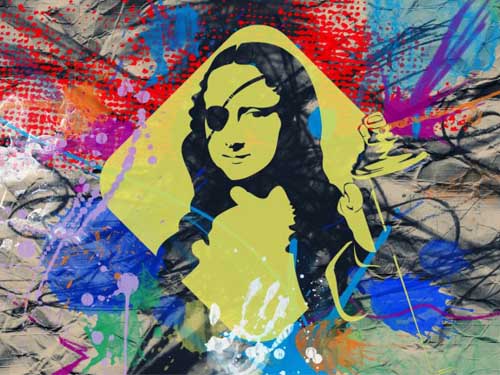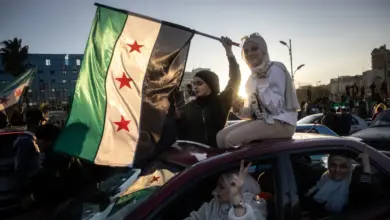
It was a landmark day when prominent women’s rights activist Doria Shafiq bravely led a march of 1,500 women to storm the gates of Parliament on 19 February 1951. After several hours of unrelenting protest, Shafiq was finally received inside the office, where the council agreed to consider the demands of Egyptian women.
Along with her predecessors, including Hoda Shaarawi, Nabawiya Moussa and Ceza Nabarawi, Shafiq remains one of the leading pioneers of the women’s liberation movement in Egypt during the early 20th century. Her march to Parliament later led to the inclusion of women’s suffrage in the 1956 Constitution.
But, despite her many feats, Shafiq is likely to be forgotten in the minds of future generations in Egypt.
Al-Masry Al-Youm reported in January that the 2013–2014 editions of National Education textbooks had been edited to delete the picture of Doriya Shafiq and pictures of those killed during the 25 January revolution. The article also noted that Shafiq’s image was removed from a high-school textbook because she was not veiled.
But, as the subversion of Egyptian women continues, local human rights activists have become more creative in their fight for women’s equality, representation and rights.
Seen through local street art collectives like Noon El Neswa, the Mona Lisa Brigades and various independent efforts, a new wave of gender-sensitive street art and visual campaigns seeks to challenge the low status of Egyptian women by painting them in a positive light.
“They are already deleting female activists from our history books,” says Shady Khalil, the co-founder of Noon El Neswa, a gender-sensitive street art collective. “In order to help reverse the effects of this and many other attacks on women’s rights, we have been creating graffiti campaigns with the purpose of reclaiming women’s rightful position in public spaces.”
He says the goal is to utilize gender-sensitive and female-driven street art campaigns to tackle and invert negative social ideas or stereotypes toward women.
Co-founder Merna Thomas says, “The idea was to gather a group of young, female rights activists and visual artists to collaborate in constructing public campaigns aimed at changing the narrative of women in Egypt.”
The collective officially launched on 9 March 2012, a symbolic date that coincided with the one-year anniversary of the “virginity tests” allegedly carried out by members of the military and security forces against detained female protesters.
At the time, Khalil had been working with the women’s rights activist group Nazra for Feminist Studies. The organization agreed to help launch the initiative, providing them with a gathering space and legal consultation.
Thomas had also begun taking on women’s causes after volunteering with Harassmap, an organization and website created by activists to shed light on the prevalence of sexual harassment.
“The first campaign we launched under Noon El Neswa was called Graffiti Haremi (Women’s Graffiti),” says Thomas. “Through our resources and networks we built while working with Nazra and Harassmap, we were able to begin developing solid plans for our campaigns. But the idea was to create positive images. Rather than highlighting the negative, we wanted to promote the positive.”
And in March, they launched the campaign throughout the industrial town of Mahalla — the campaign also coincided with Labor Day to honor the many female workers in Mahalla.
Local graffiti artists Diaa al-Sayed and Mohamed El Moshir, along with members of the collective, developed a series of stencils using familiar icons from Egyptian pop culture, including powerful women such as actress Souad Hosni, songstress Om Kalthoum and film star Faten Hamama.
“We had noticed that women were only being used in graffiti as a form of insult — we wanted to reverse this by covering the streets with female icons that every Egyptian knows and loves,” says Khalil.
The group also worked with local labor activist Wedad al-Demerdash prior to the campaign to determine their strategy and slogans specific to Mahalla. Demerdash is largely credited for her leading role during the 2008 labor strikes in Mahalla, which are said to have been a precursor to the 25 January revolution.
In the time since, Noon El Neswa has launched campaigns in various neighborhoods throughout Cairo. The collective has also made great efforts to target impoverished neighborhoods with limited exposure to graffiti, including Basateen, Ard al-Maadi, Dar al-Salam and Old Cairo.
Their stencils are simple and recognizable. Their most notable work includes a stencil triptych created by Sayed, which pictures the outline of one woman without hear-covering, a second wearing a hijab and a third wearing a niqab. The slogan reads, “Don’t label me.”
Another notable work is one created by Moshir, which features the image of Om Kalthoum alongside her song lyrics, “Give me my freedom and free my hand.”
Thomas says she hopes the collective can continue growing, although it is limited by a lack of financial and human resources. Her future ambition with the collective is to continue creating empowering campaigns for women, in collaboration with other women’s rights groups.
Meanwhile, another collective of young activists called the Mona Lisa Brigades has also joined the cause of empowering women and children and promoting social justice through organized street art campaigns.
Mohamed Ismail and Mostafa Ali founded the Mona Lisa Brigades as a direct response to the excessive forced used by the then-ruling Supreme Council of the Armed Forces against demonstrators. The group’s signature stencil can be seen prominently in downtown Cairo. It depicts Mona Lisa on a bright yellow crosswalk sign; her eye is covered in an eye-patch while her hand holds a spray can.
The group’s most notable campaign, titled “I Want to Be,” can be seen in the Ard al-Lewa neighborhood in Giza.
“After doing a great deal of research in Ard al-Lewa, we discovered there were thousands of children who have had almost no voice or representation throughout this movement,” says Ismail. “So we sat with many of them. We discussed their dreams and hopes.
“Soon after, and with their approval, we sprayed stencils of their faces along the walls. Under each image, we included the child’s dream. This way, whenever those kids walk by their faces on the wall, they will never forget their dreams,” says Ismail.
The collective’s upcoming campaign, “We Are All Human,” will also take place in Ard al-Lewa within the coming months. According to Ismail, the aim of the campaign is to emphasize the need for cross-cultural understanding in Egypt.
He hopes that, one day, street art can align more with political campaigns. He believes political parties should consider using graffiti for grassroots expansion, as it is an instrument and medium that is inexpensive and easy to spread.
This piece was originally published in Egypt Independent's weekly print edition.





